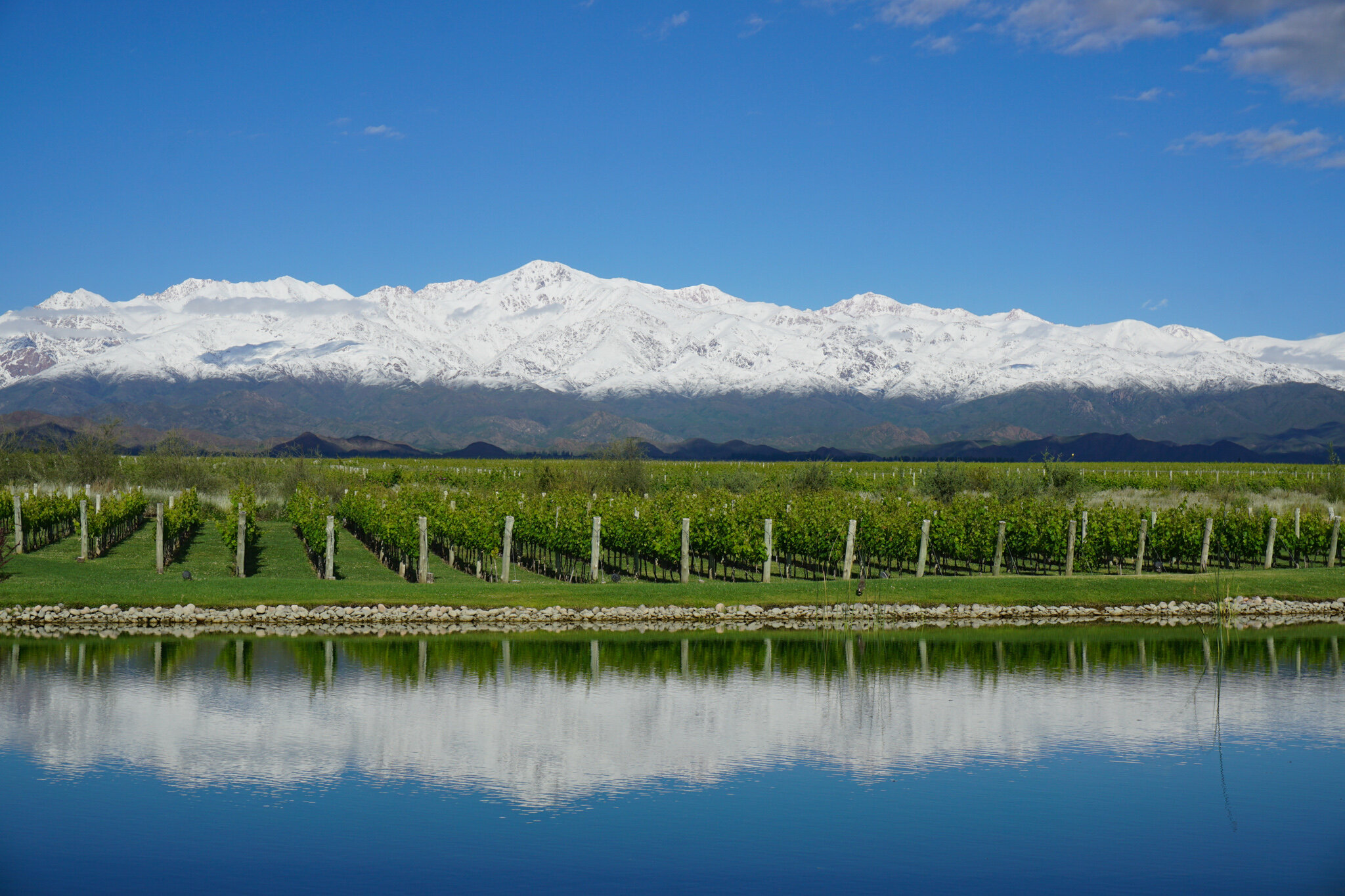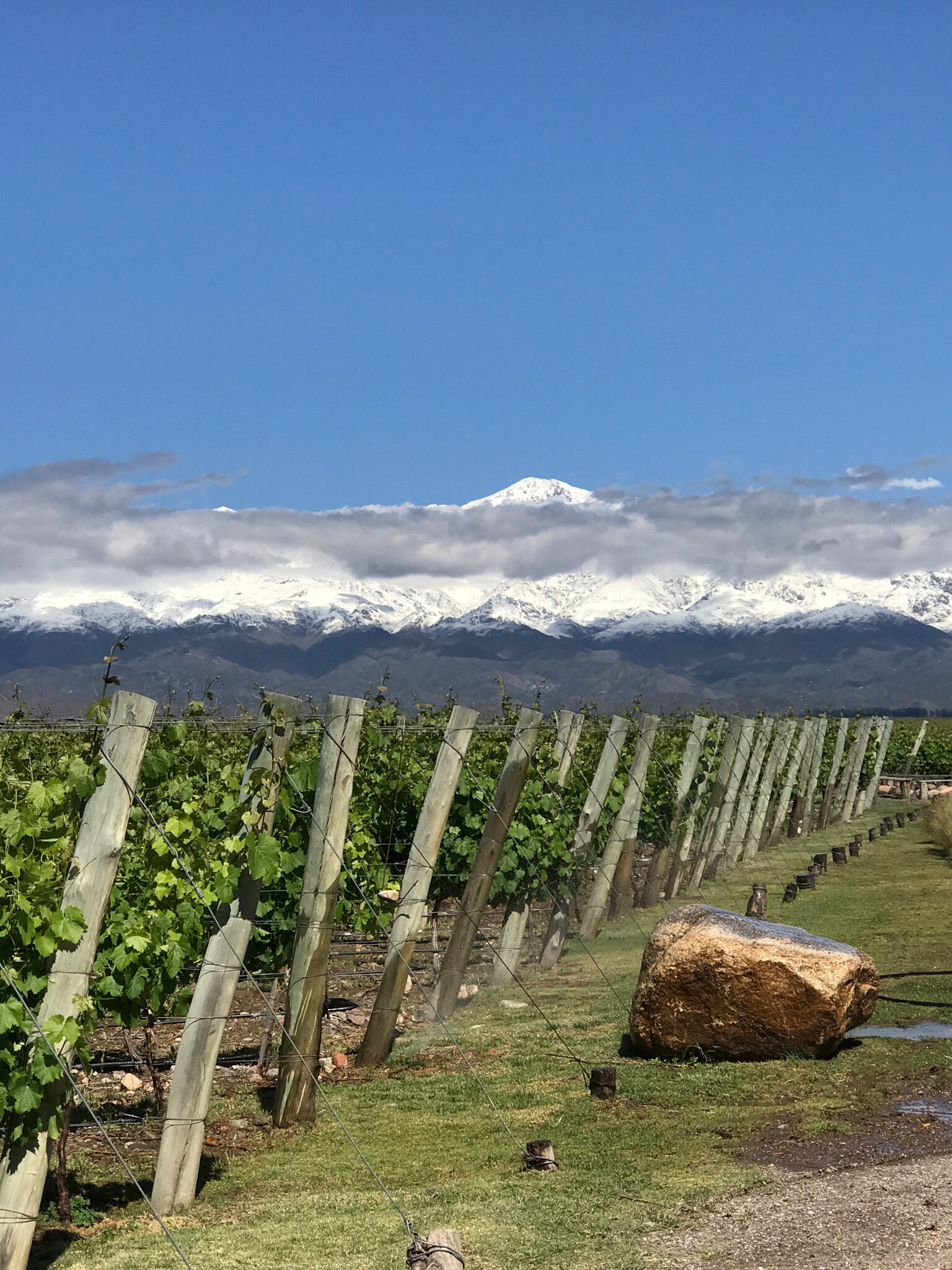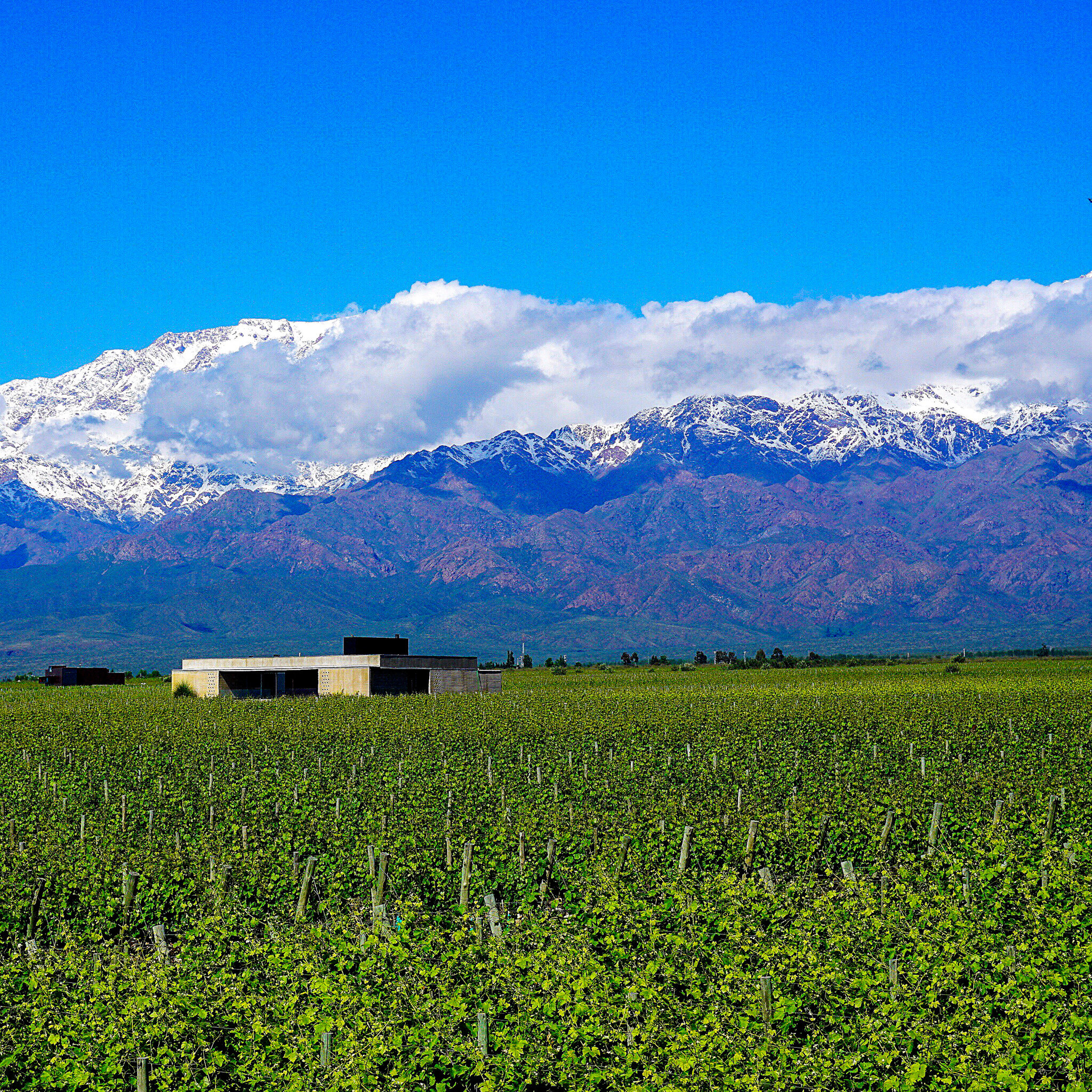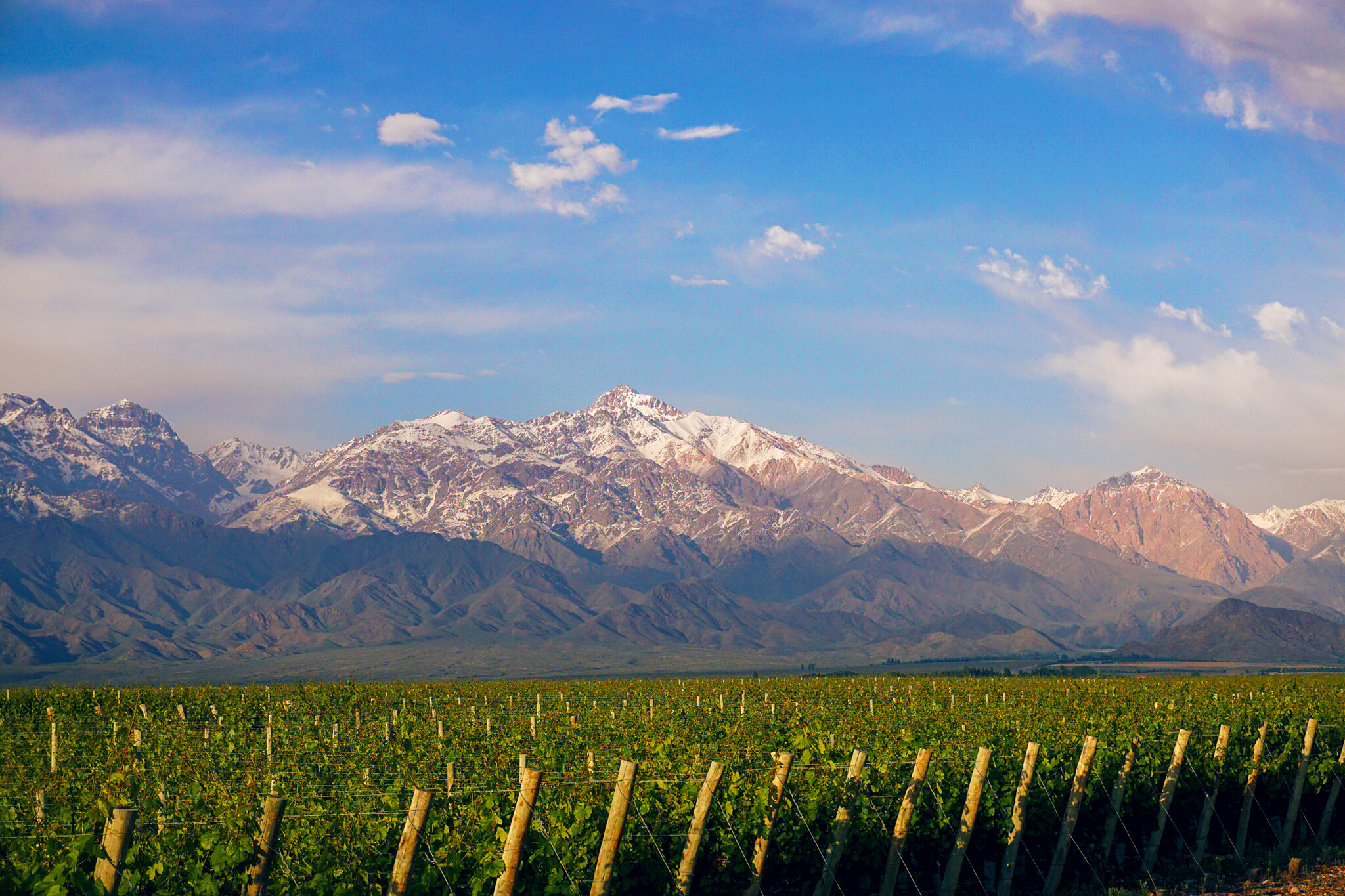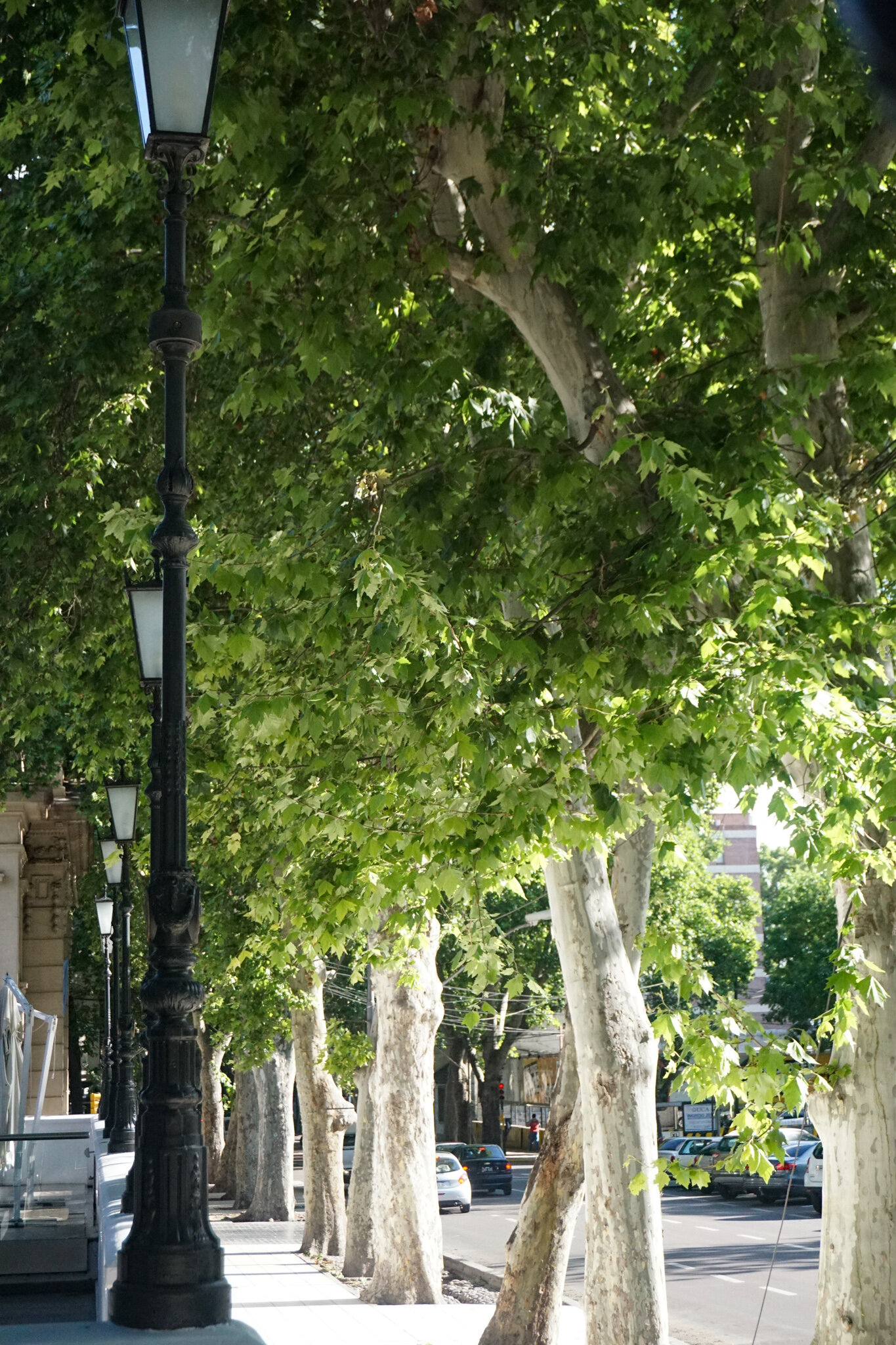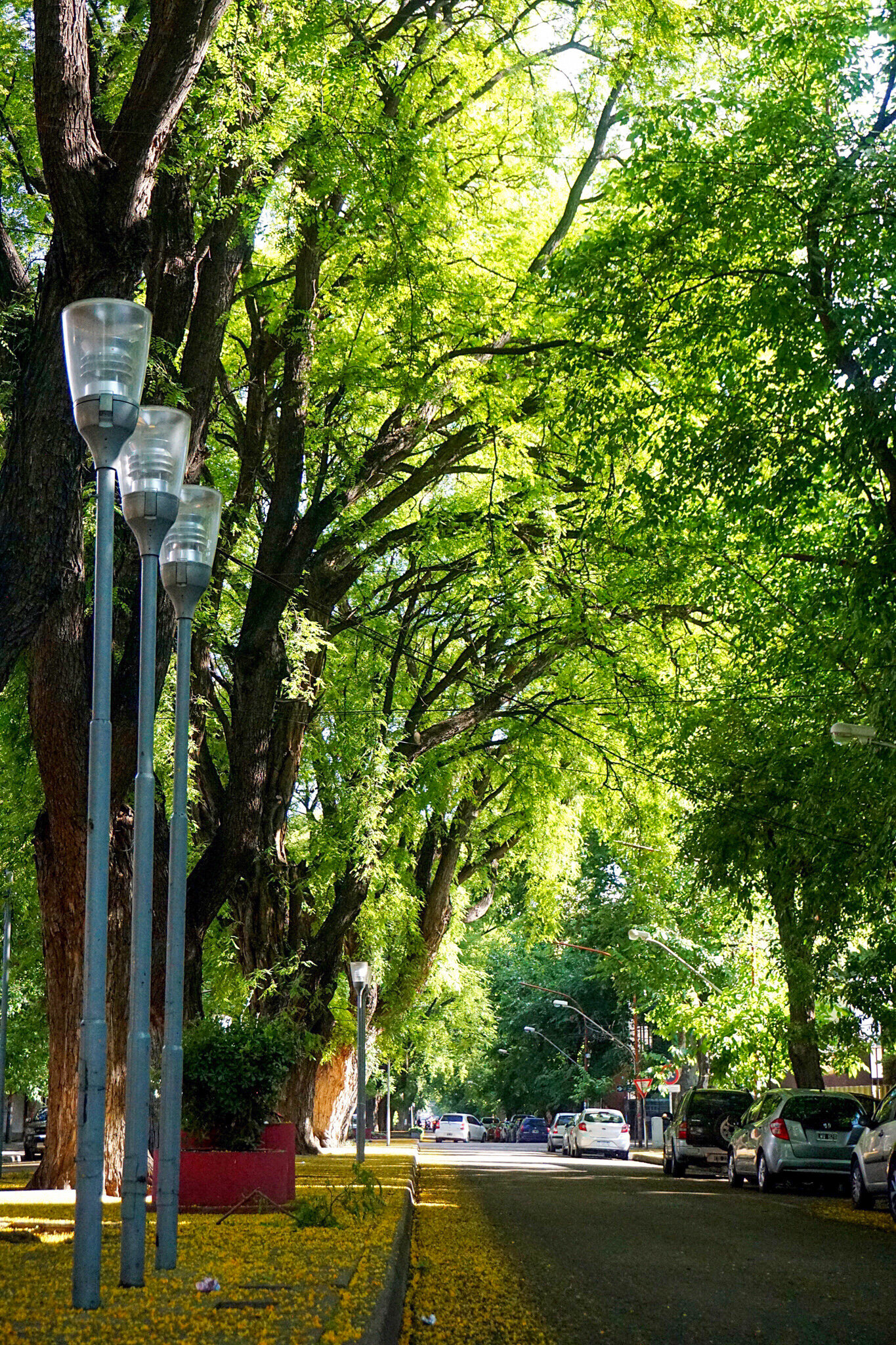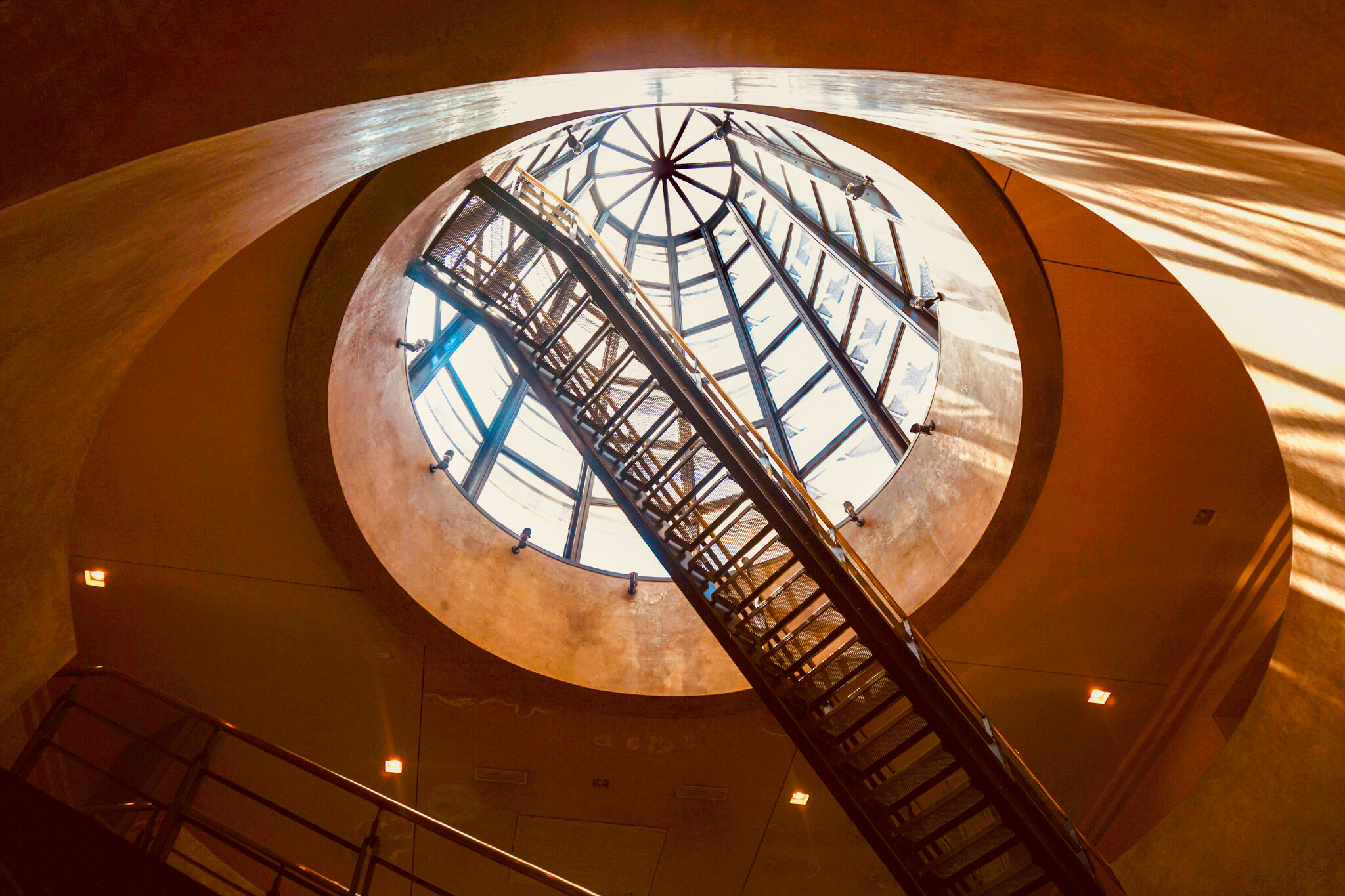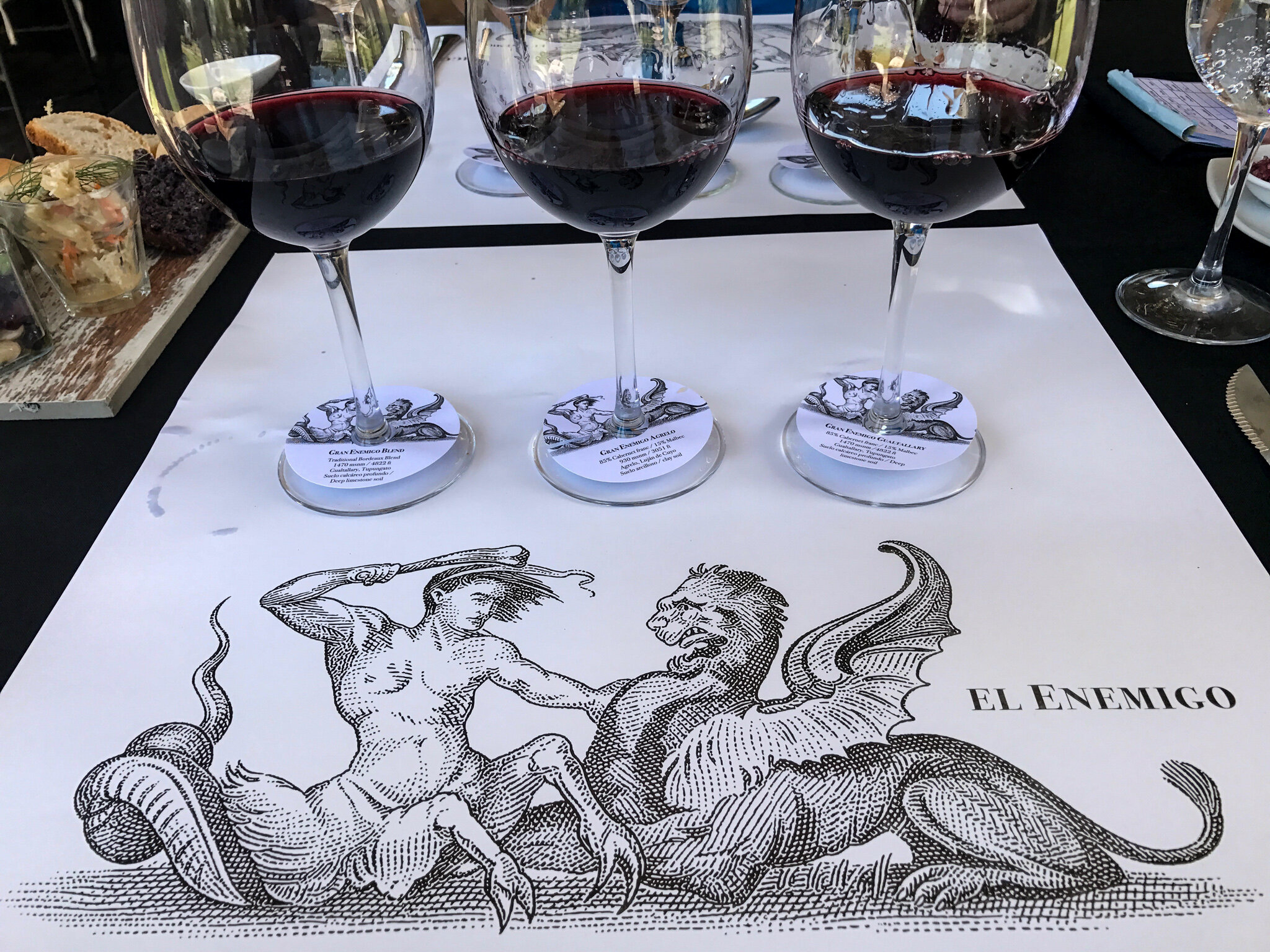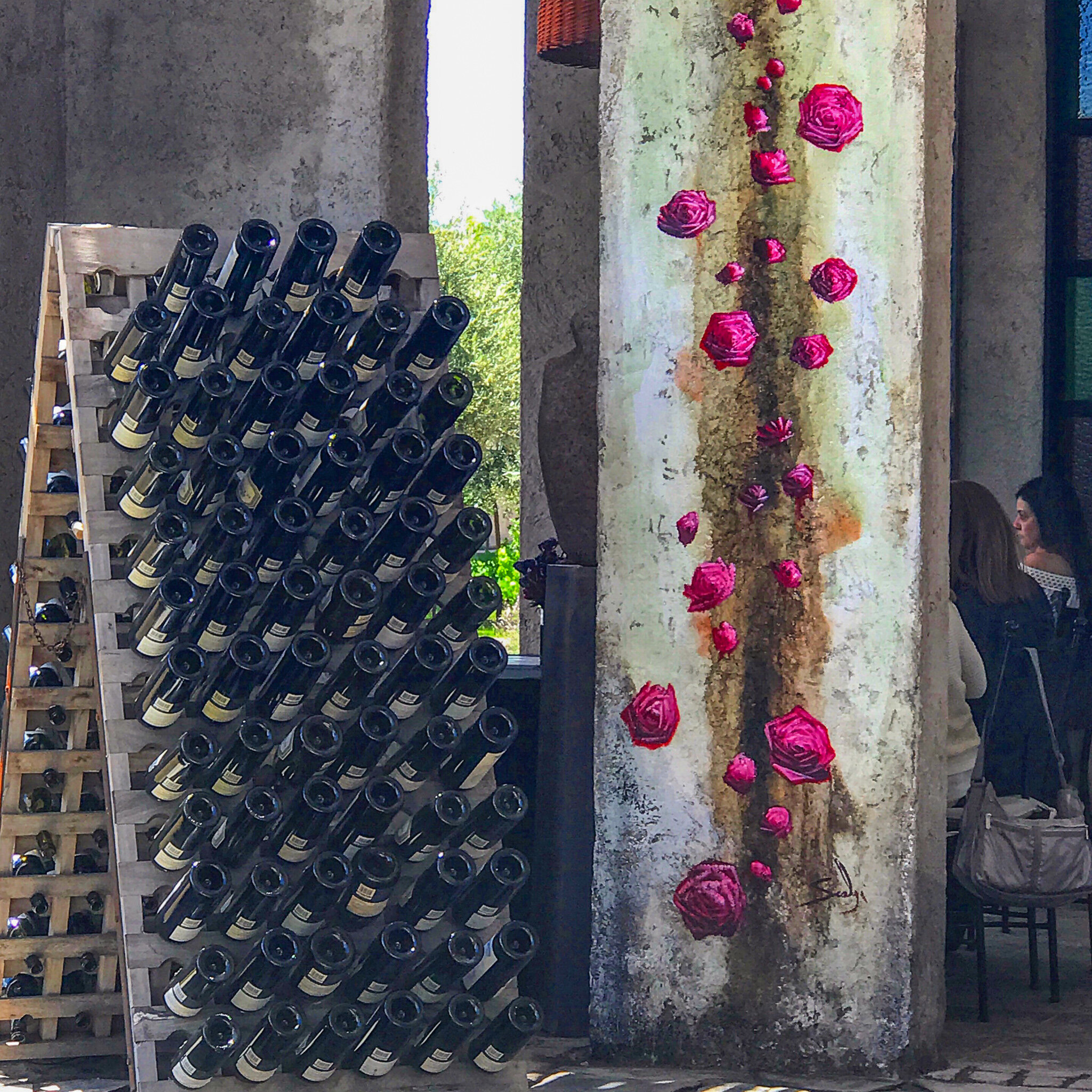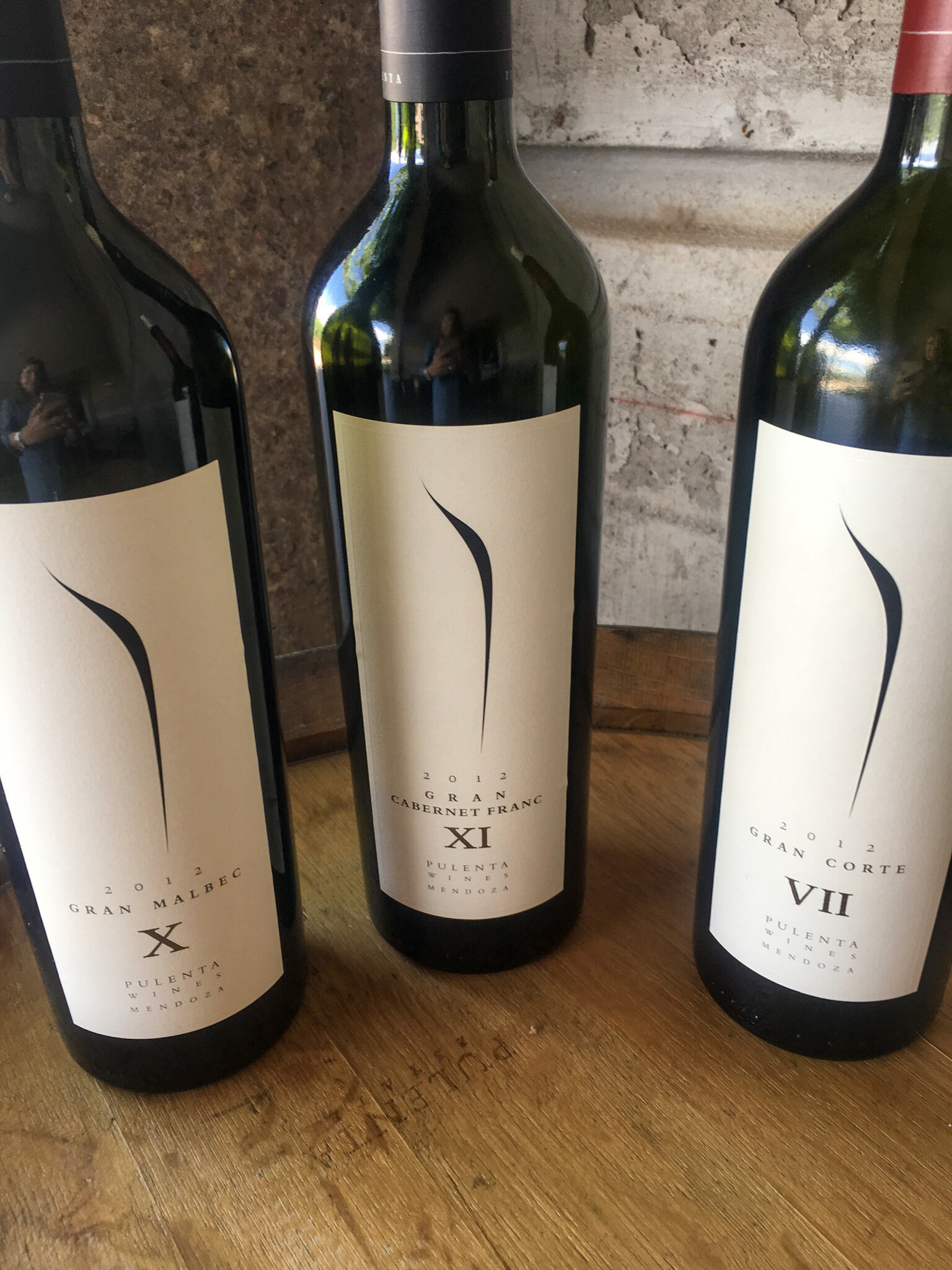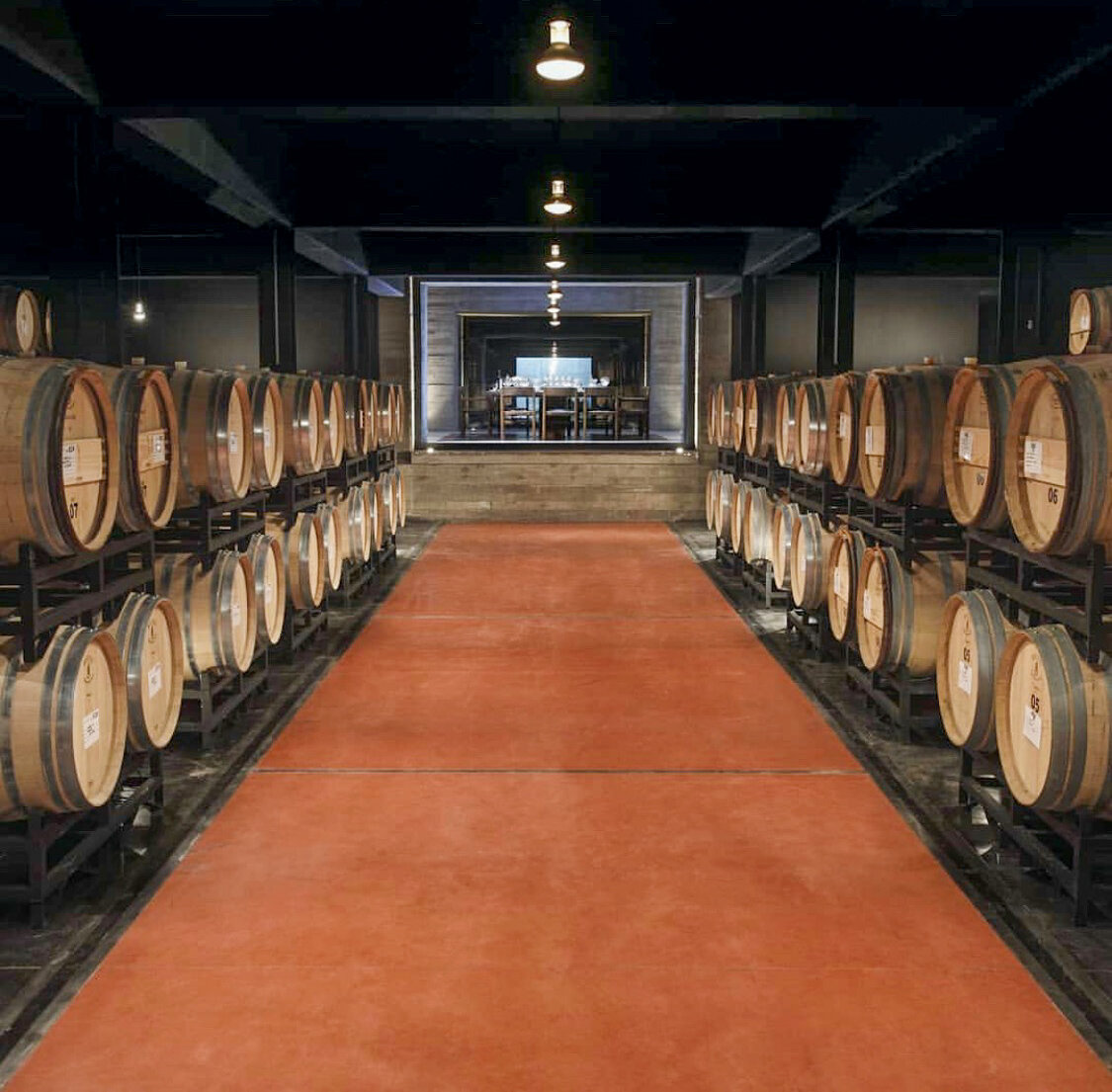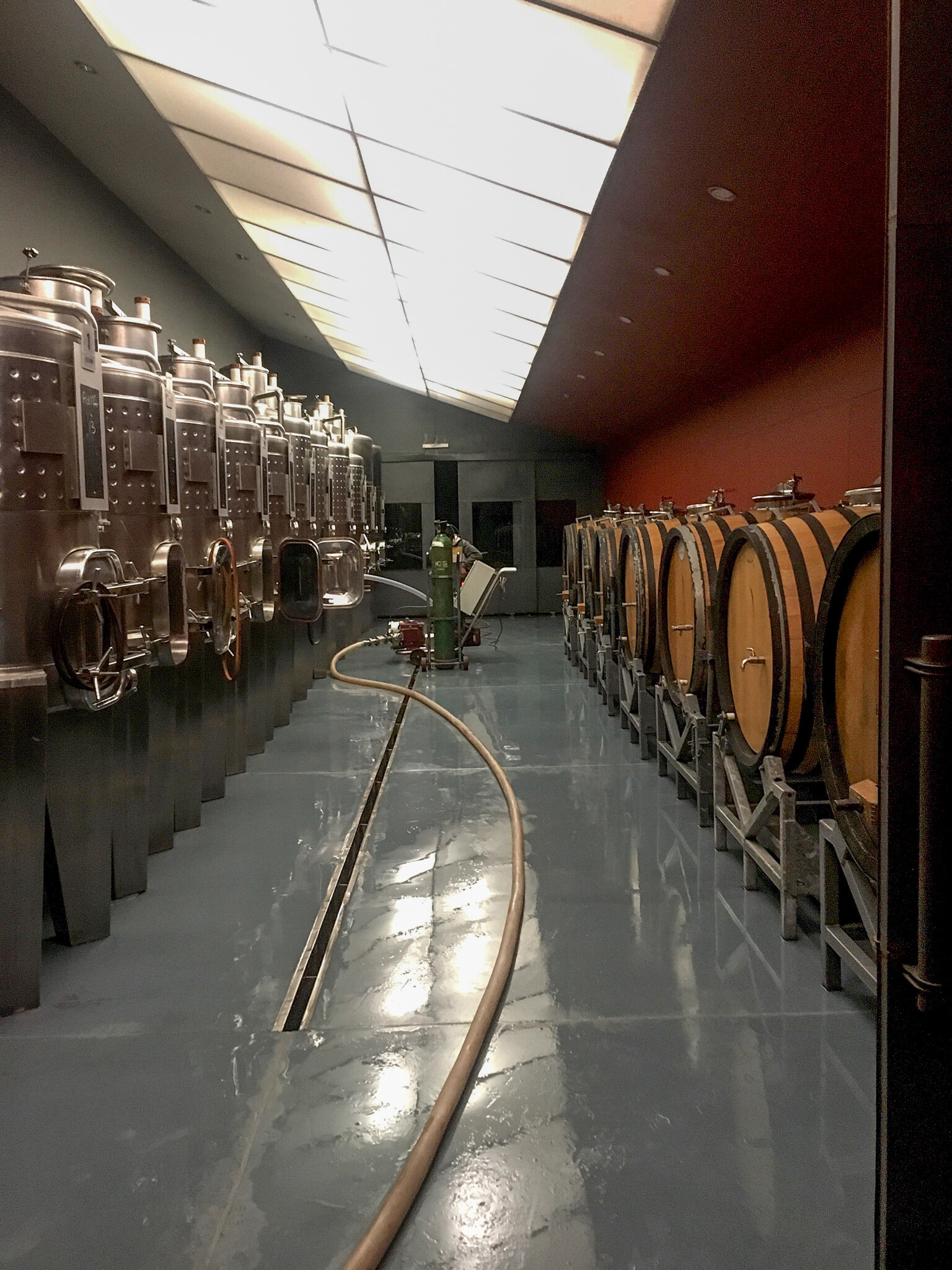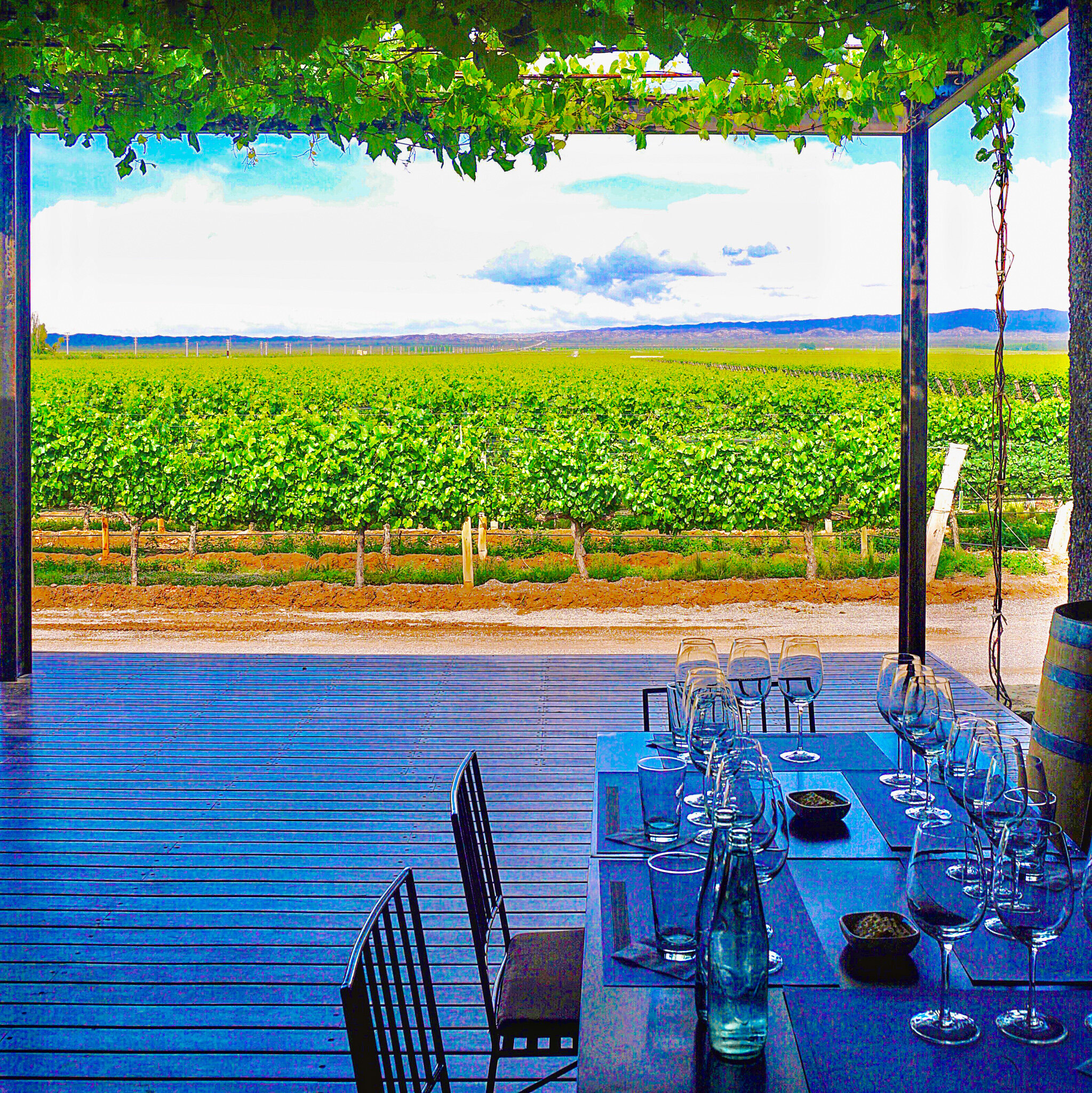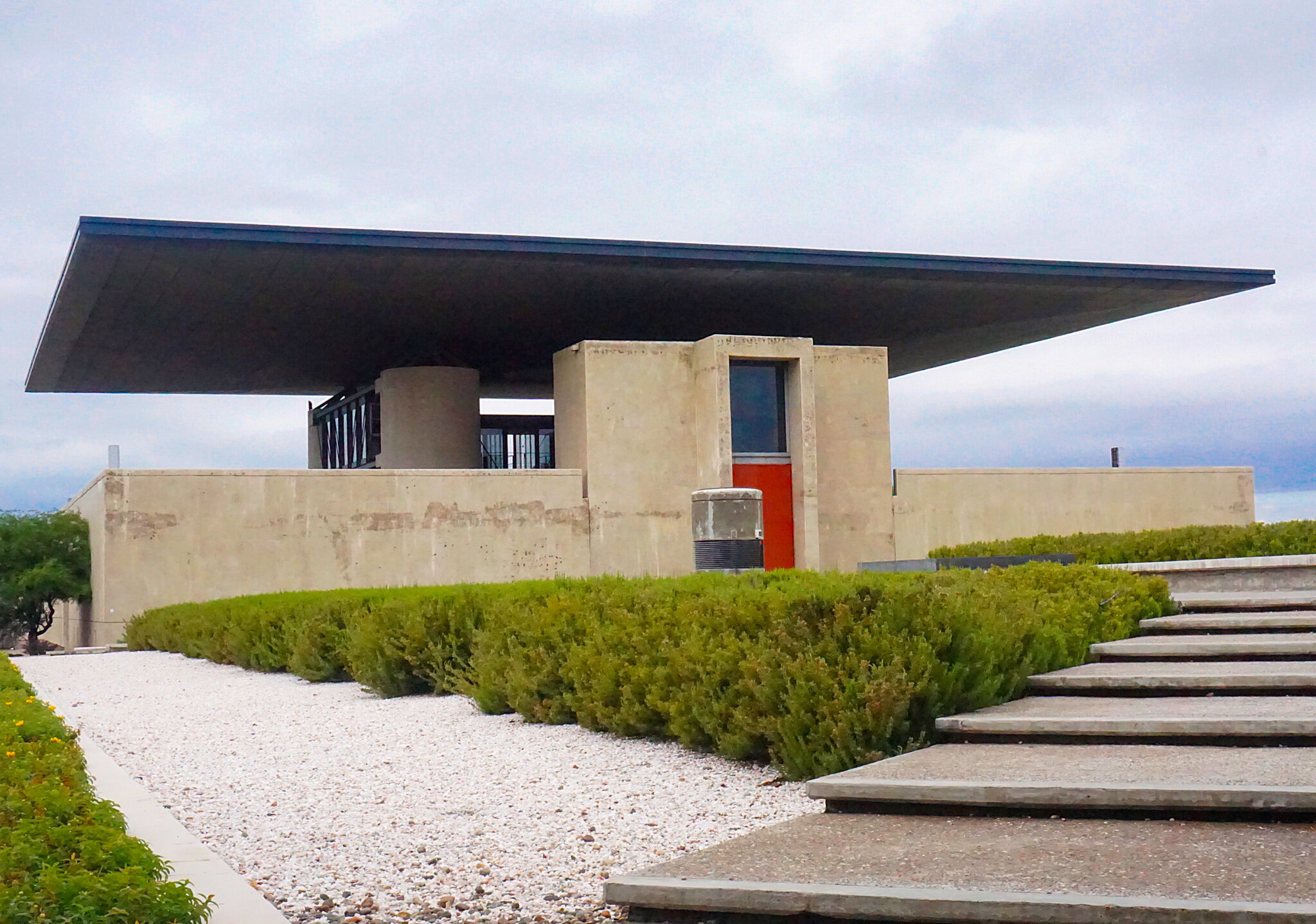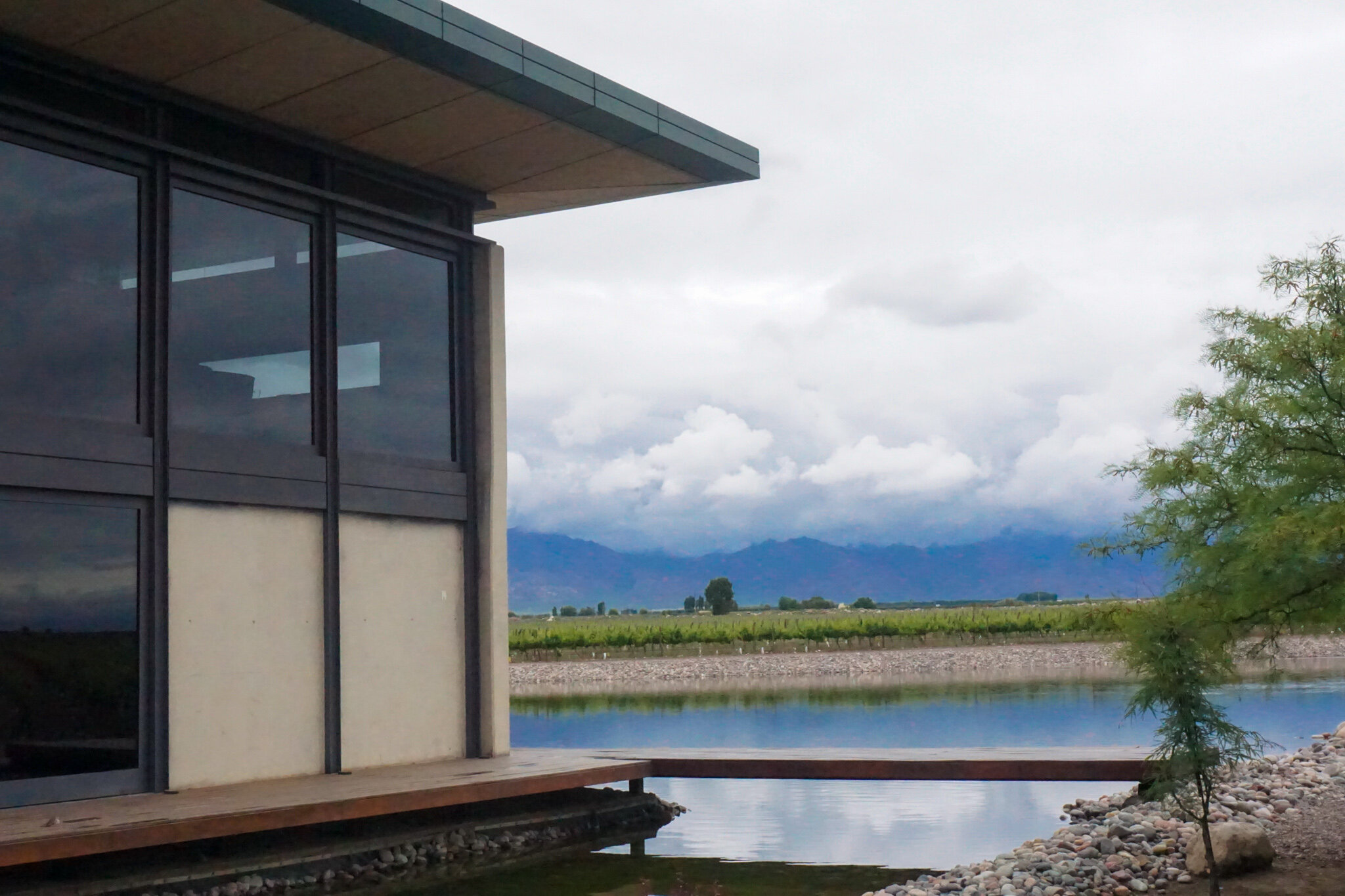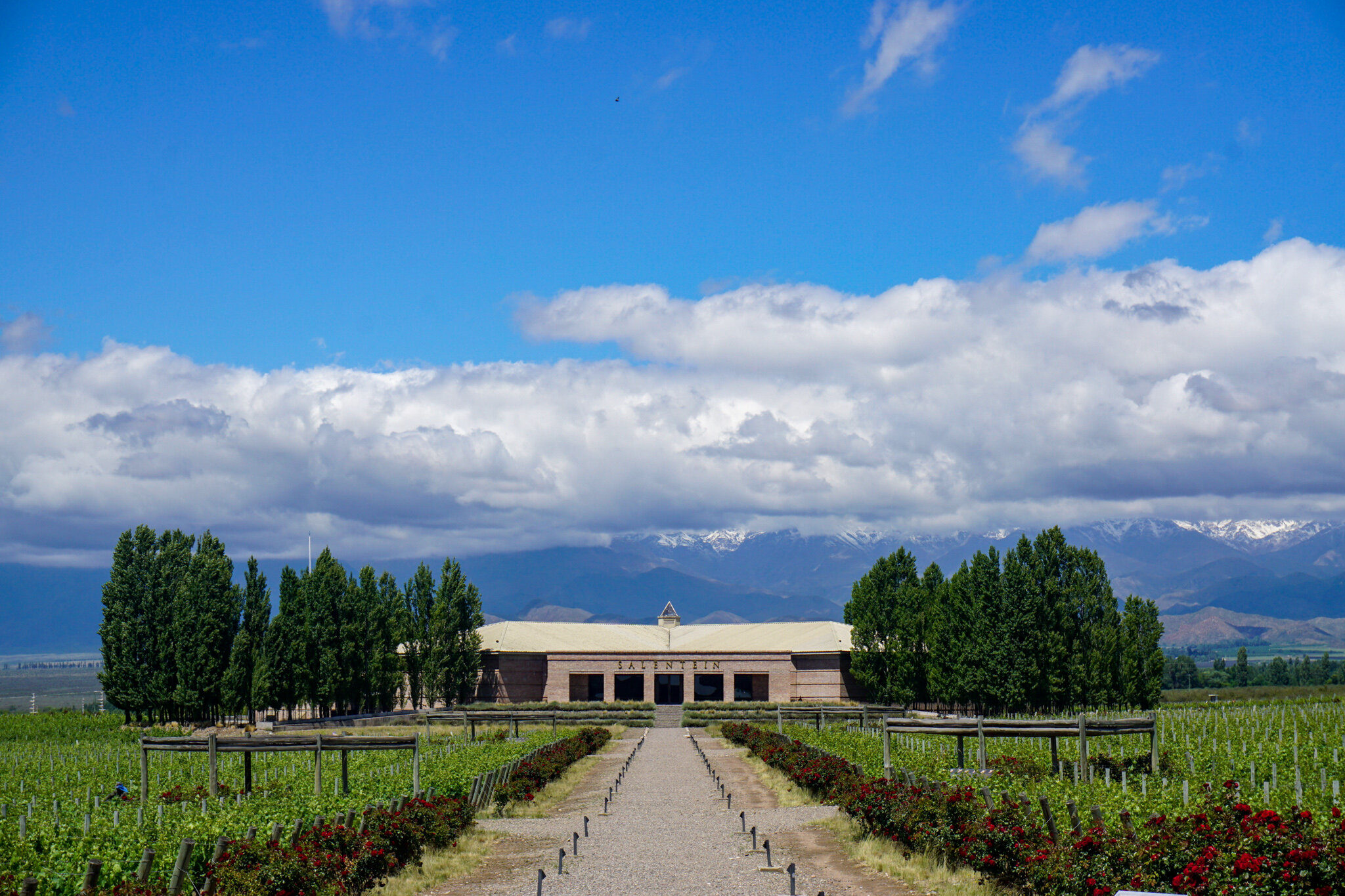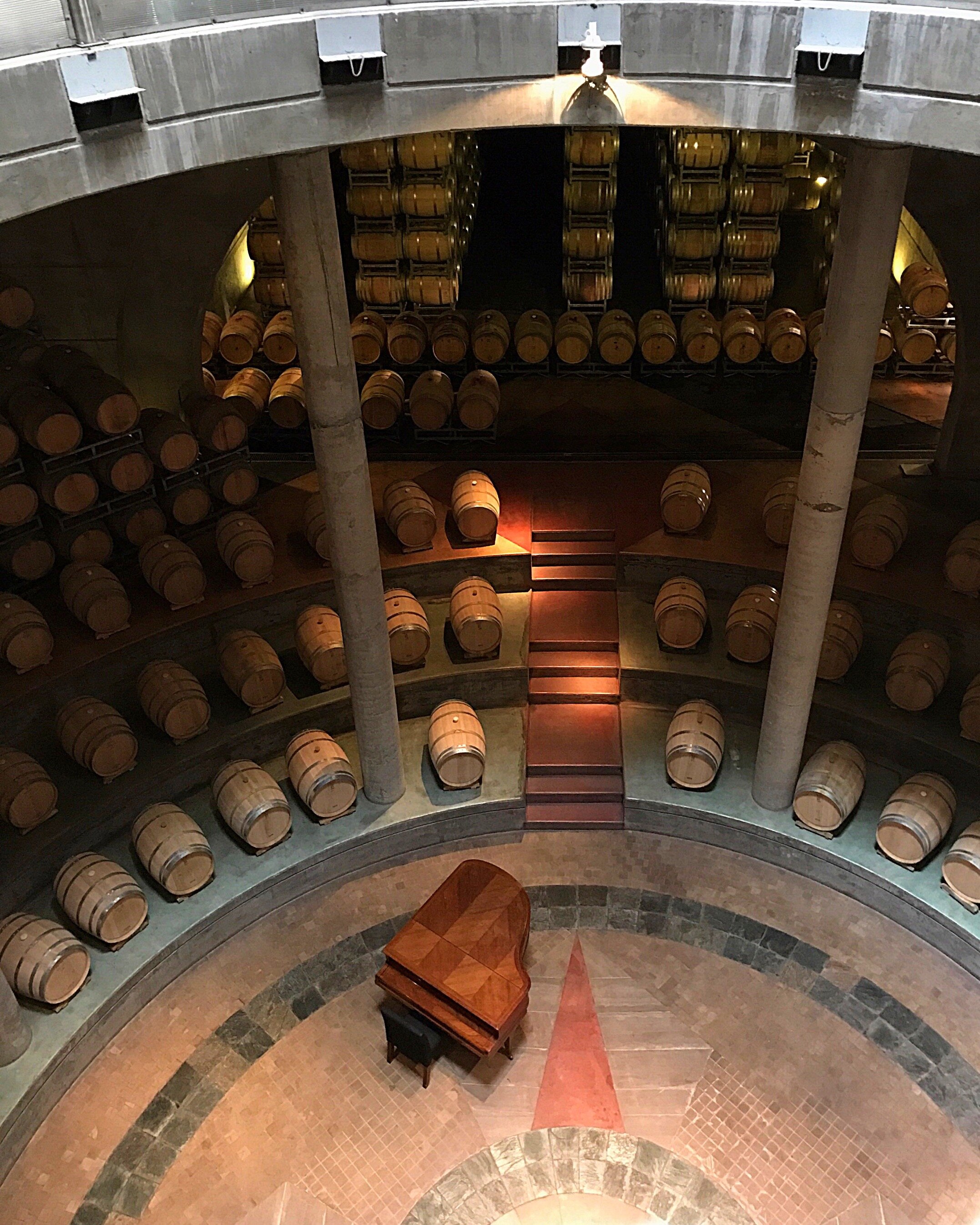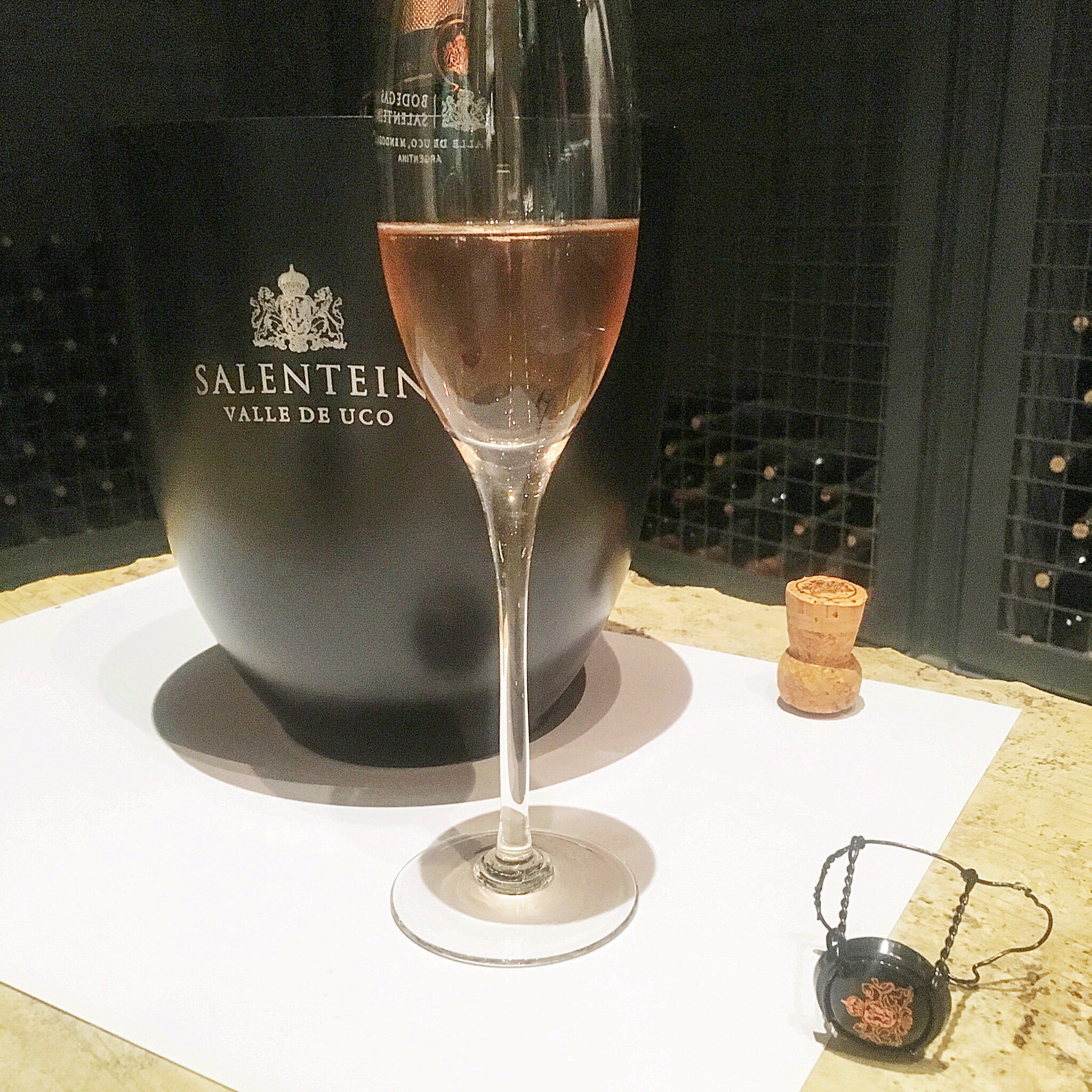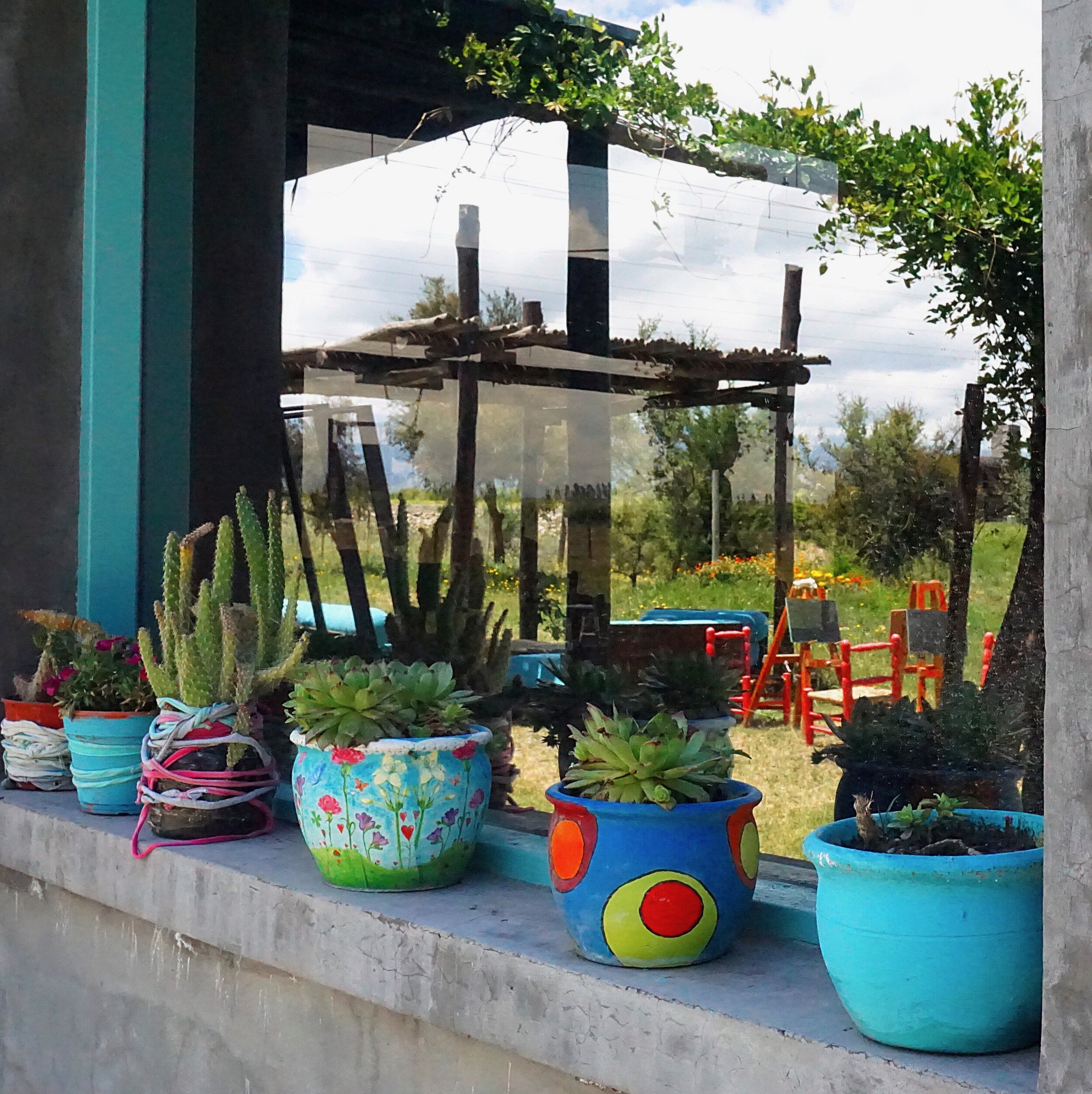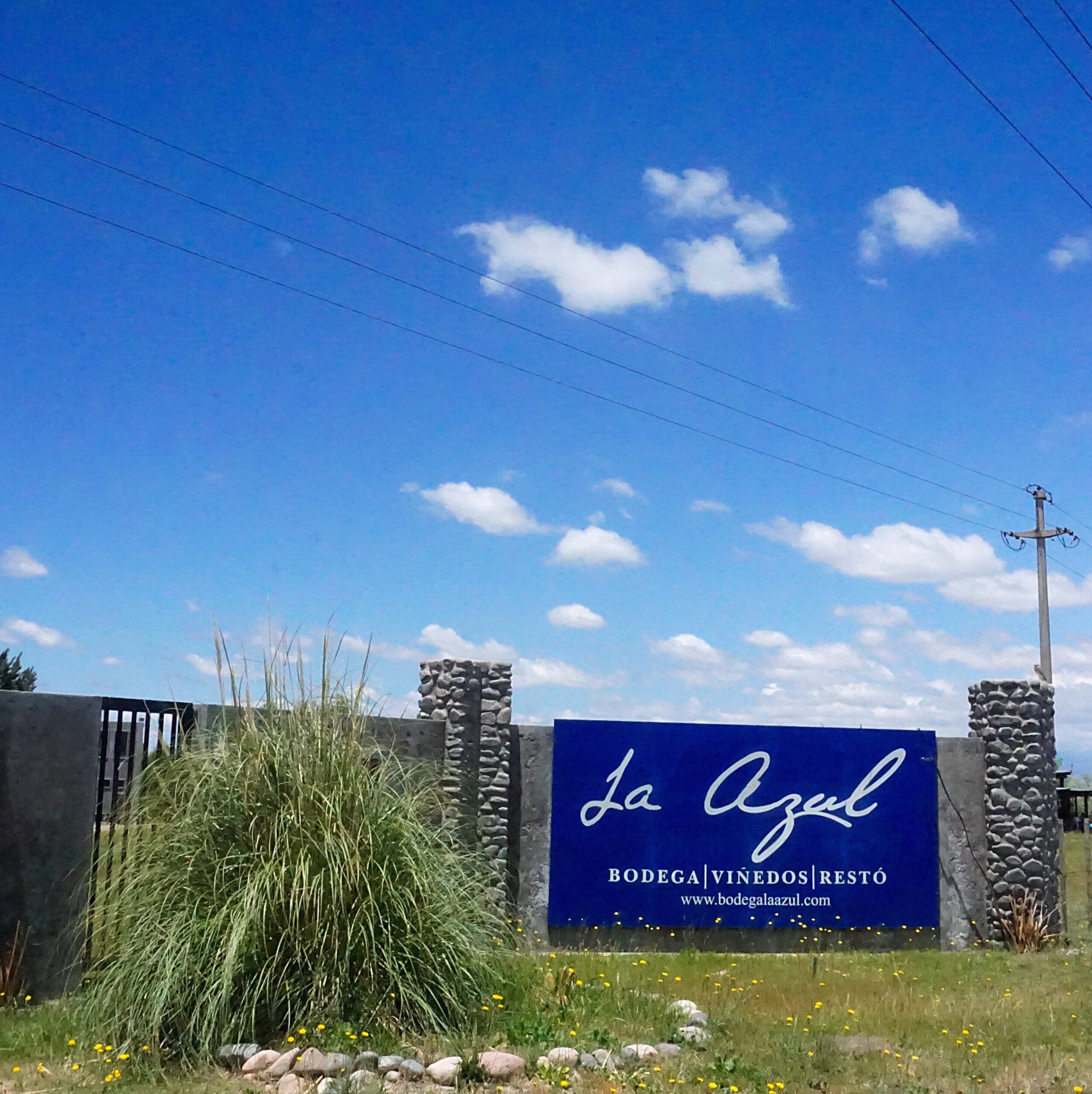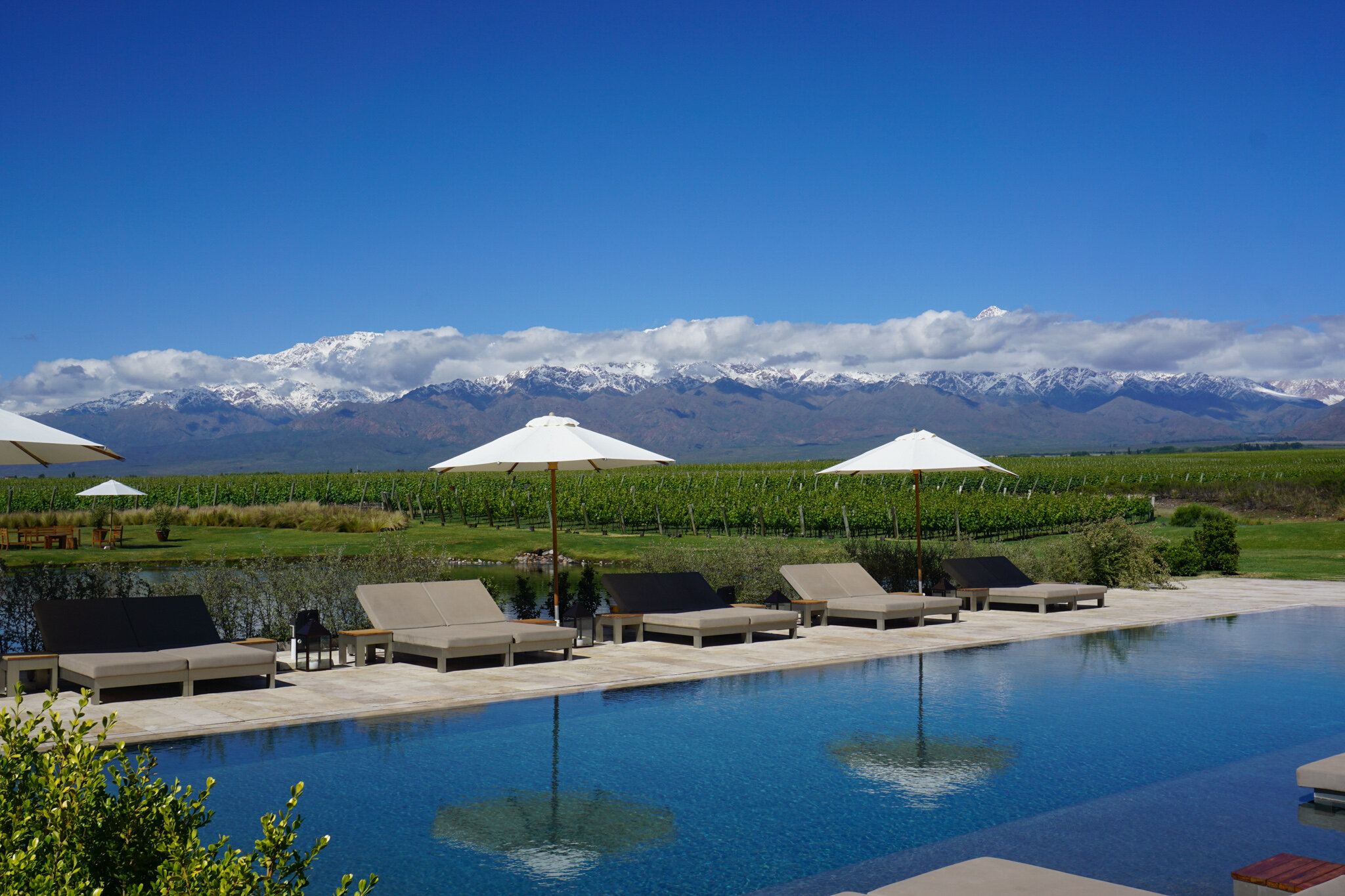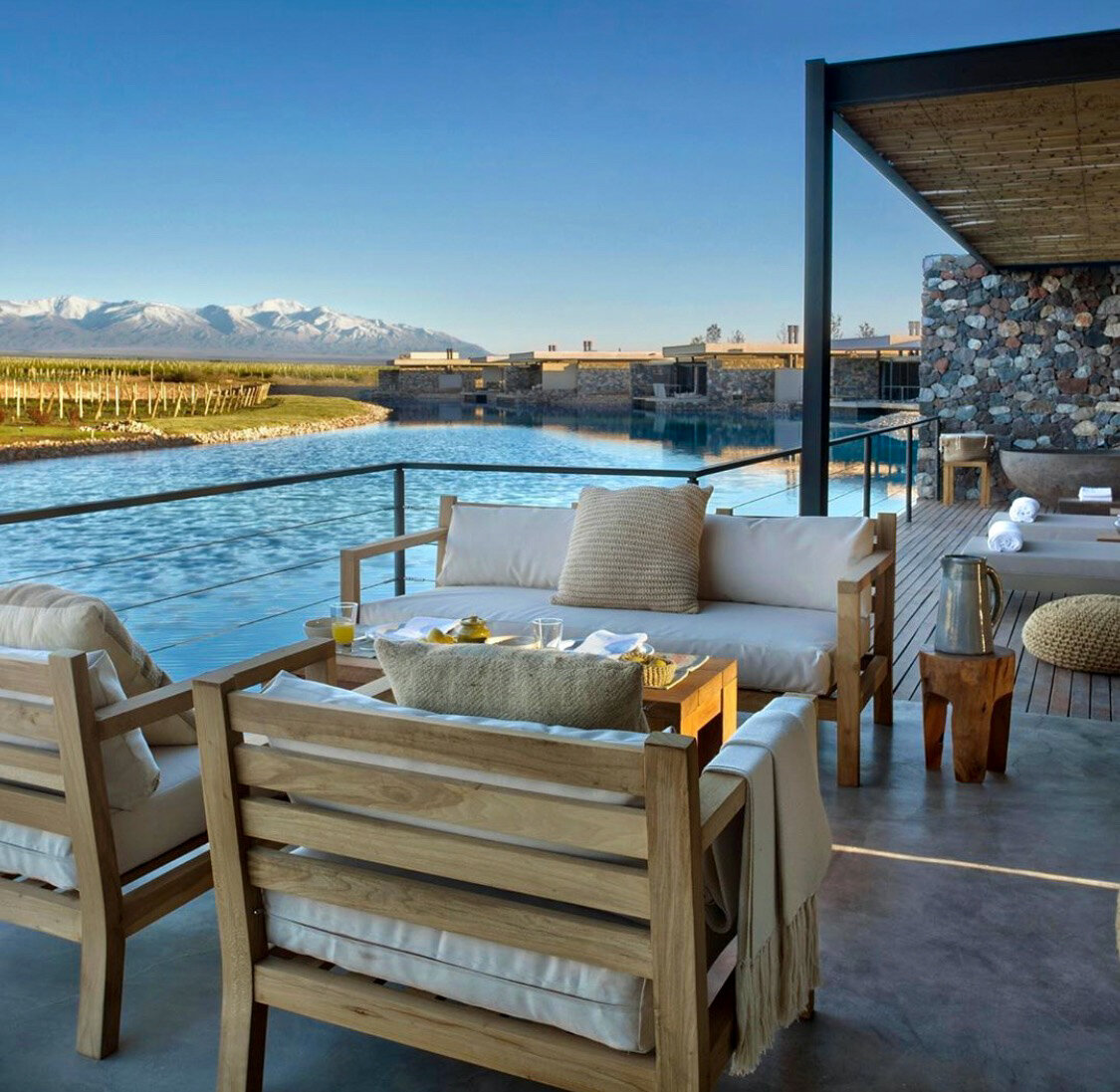Argentina: Wine Travel
The Andes Mountains are even more majestic than they appear in photos and definitely a significant distinction of this wine region. Winemaking can be traced back to the mid-1800s, when many European immigrants found their way to this beautiful land. This South American country has a wine-drinking culture with some crazy levels of consumption per capita. With a fun-loving wine culture and a hard-to-beat setting, you will find Argentina a wine destination that is hard to match.
Mendoza is the center of this wine country and a lovely town to stroll the tree-lined streets. You can visit the Maipu and Lujan de Cuyo regions by using this town as a home base. You can fly into Mendoza's international airport either from Buenos Aires or Santiago, Chile. We took the 50-minute plane ride, much of which was the climb over the mountains, from Chile and combined the two countries in our travels.
I recommend hiring a driver to explore the wine country, not because the roads are bad, they are just poorly marked, and many places cannot be found using the GPS. In addition to driving, these guides will make winery suggestions and arrange your visits. We enjoyed our time with one of the best in the valley; please contact me for a recommendation.
Be sure to reserve an evening at the 1884 restaurant. This is where you'll be introduced to the renowned Argentian chef, Francis Mallmann, best known for his playing with fire approach to cooking. This is not for vegetarians; it's an impressive lineup of the best cuts of beef, all cooked over a hot fire grill pit. If you are a meat-lover, you will be in heaven in Argentina, and this meal will be one you'll never forget.
The Region and Grapes:
The continental climate here is generally dry. As you can imagine, altitude is a major influential factor on individual vineyard climate. At high elevations, grapes benefit from intense sunny days and cooler overnight temperatures.
Malbec has become synonymous with Argentinean wine, a mix between Cabernet's power and the softness of Merlot. Argentina’s most widely planted grape produces a wine with excellent concentration, but it’s very approachable with softer tannins. Bonarda is the second most planted red grape, typically used to blend; however, many winemakers are finding it makes for a beautiful wine all on its own. As you explore Argentinian wine, you'll discover so much more than Malbec. A surprise for us was the Cabernet Franc; it rose to the top of our preferences at two of our tastings (Salentein and El Enemigo).
Although Torrontés is the main white grape of Argentina, it wasn't my favorite. However, we did find several Sauvignon Blancs that stood out. Chardonnay also seemed to be on the rise, so don’t disregard white wine completely.
Once you've experienced everything that Argentina has to offer, you will be shocked at the fantastic quality to price ratio the region provides. Beyond this, you will discover many fresh and terroir-driven wines and leave behind any notion that it’s only overripe or overoaked Malbec.
To Visit:
To understand a piece of Argentian wine history, you must visit Catena Zapata, whose family came from Italy and planted the first Malbec vineyard in 1902. As the vineyards were handed down through the generations, Nicolas spearheaded the revolution for quality over quantity in Argentina. He brought techniques from France and Napa and began planting at higher altitudes. His daughter Laura has taken over and continues with research and development of their wines and has created an excellent line of her own. She believes Malbec behaves more like Pinot Noir than Cabernet Sauvignon. So she shortened the maceration time to preserve the fruit aromas, and to increase texture uses punch-downs and whole-cluster fermentation. The Adrianna Vineyard Malbec was one of my favorites. This high-altitude vineyard, at almost 5,000 feet, has created a stir in terroir discovery.
The winemaker from Catena has his own winery, El Enemigo, and he makes some unique and premier wines under his label. He utilizes a great deal of amphora in his winemaking with many shapes and sizes, some of which he designed. There is also a lovely restaurant onsite, and throughout the estate, his passion for the arts is on display with a unique showroom showcasing his favorites.
One of my favorite wineries is Pulenta, where we started our tour with a glass of Sauvignon Blanc in hand. The tour will provide you the family history whose origin is Italian, with nine brothers creating the story. Today, the fourth generation carries on their love for wine and Italian cars. A highlight we discovered is the amount of experimentation and quality details that go into making their wines. You'll taste through their lineup of wines, but first, you'll begin with a blind "smell test." This was a fantastic way to discuss the wines we tasted and ranks at the top of our tasting experiences. We packed away several of their wines in our suitcase.
If you enjoy remarkable winery design, you'll find it at a majority of the wineries in the Uco Valley. Many are large, modern facilities which take full advantage of the mountain views and have some spectacular cellar rooms. One of these wineries is Alfa Cruz a modernist winery, with function as the primary component, the architects managed to create one of the most unique barrel rooms. The most notable architectural feature is the giant black flat umbrella formation on top, which provides shade and temperature control but also creates a statement. Its restaurant takes full advantage of their jaw-dropping Andes backdrop and was one of the best wine pairing lunches of our visit.
The same architectural team (Bormida & Yanzón) also designed, Salentein, where piano concerts are held in their barrel room. The wineries roof echos the jagged mountain setting behind. Salentein is an immense estate with several wine lines producing over 10 million bottles. We enjoyed their sparkling rosé and the reserve Pinot, but the highlight was the Cabernet Franc that came home in our suitcase.
After you pay a visit to Salentein, head across the street to La Azul for an authentic dining experience. La Azul is a traditional family-run establishment with a casual atmosphere. You'll sit outside on the patio, where they will make you feel so relaxed while serving some of the traditional foods of the region. Afterward, you can head into their garage and taste their small production of wines. A nice contrast to the big producers.
To Stay:
For sheer beauty, a stay in the Uco Valley is a must; you'll find the best views of the Andes from here. We stayed at the Vines Resort, which is nestled amidst vineyards. From your own private deck, you will enjoy some of the most amazing views. The rooms will make you feel as if you are in your own home with fireplaces inside and out, you'll want to cozy up with a bottle of wine you've found during your visits. The spa and the onsite restaurant are both top-notch. If you time it correctly, you can eat outside at their open fire grill, another Francis Mallmann creation.
This will be a wine destination that stays in your mind for years, and certainly, one that has made us consider another visit.

